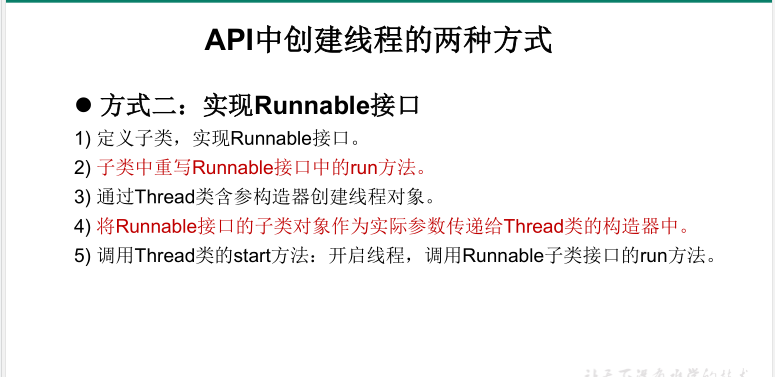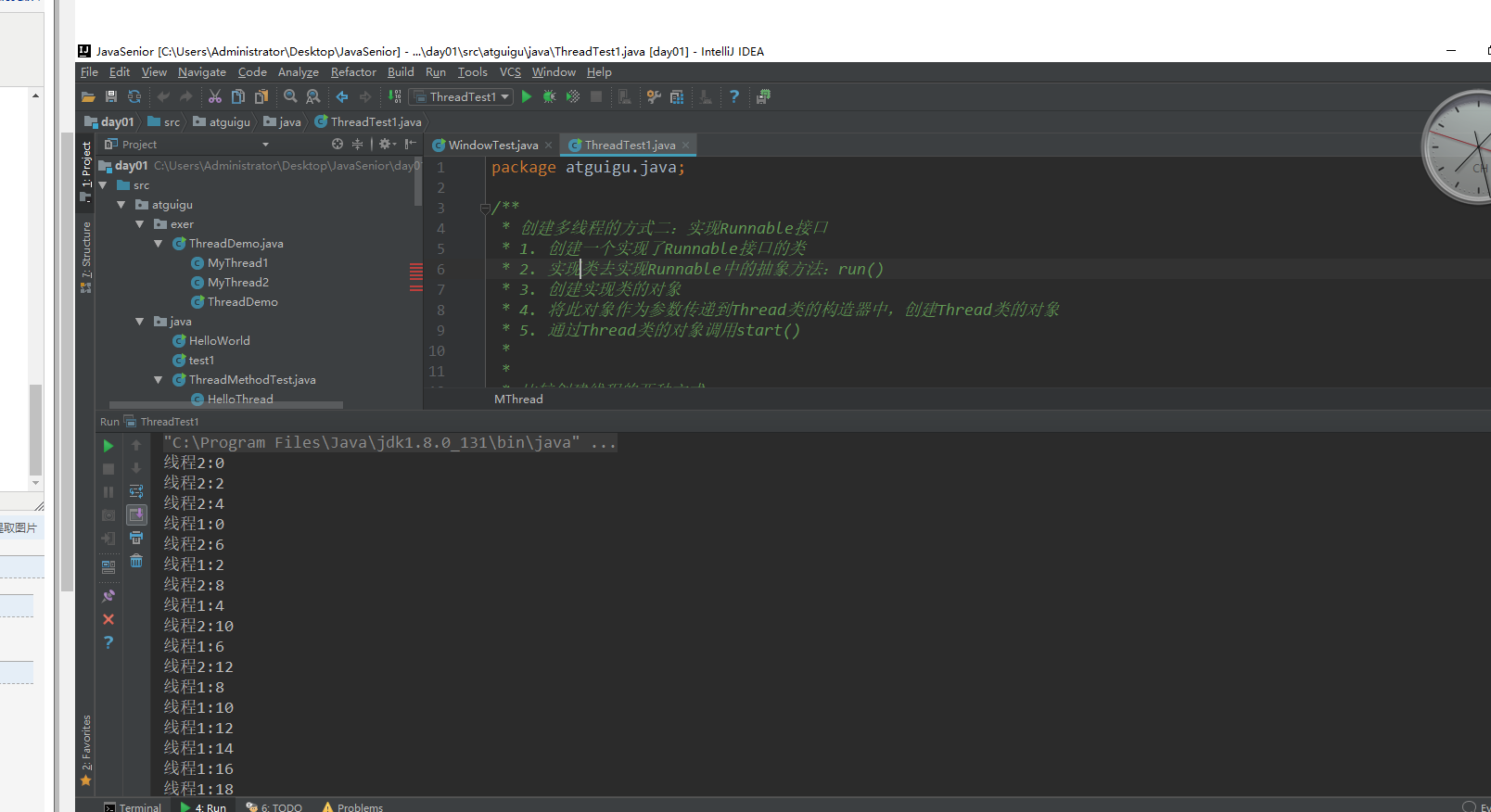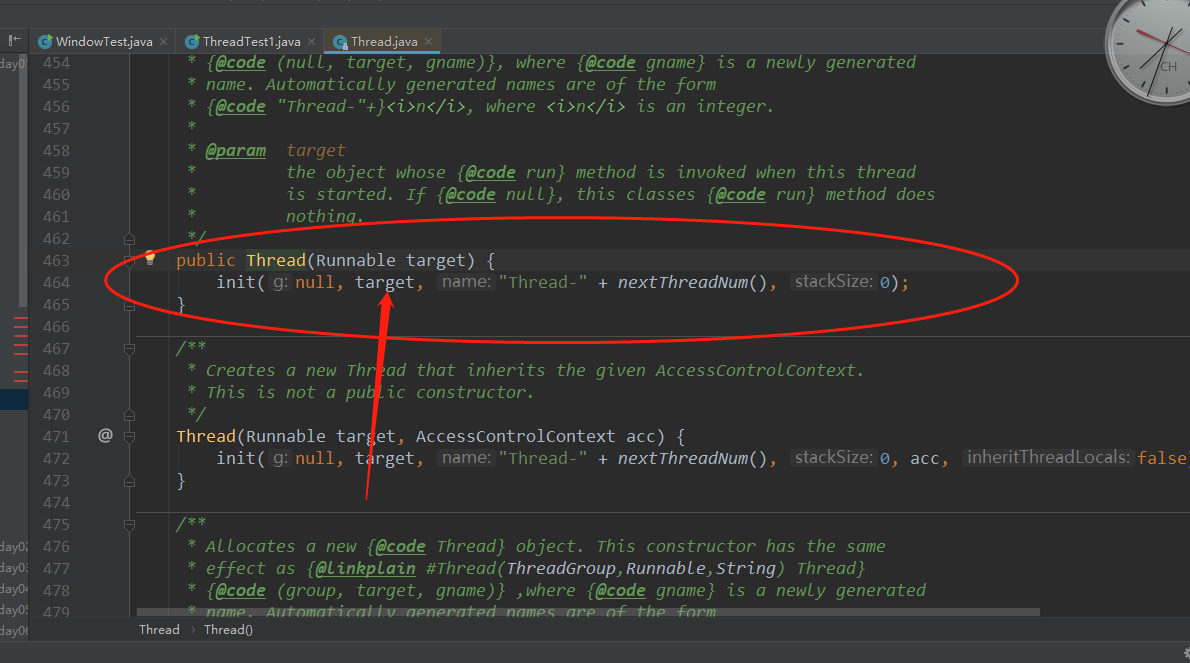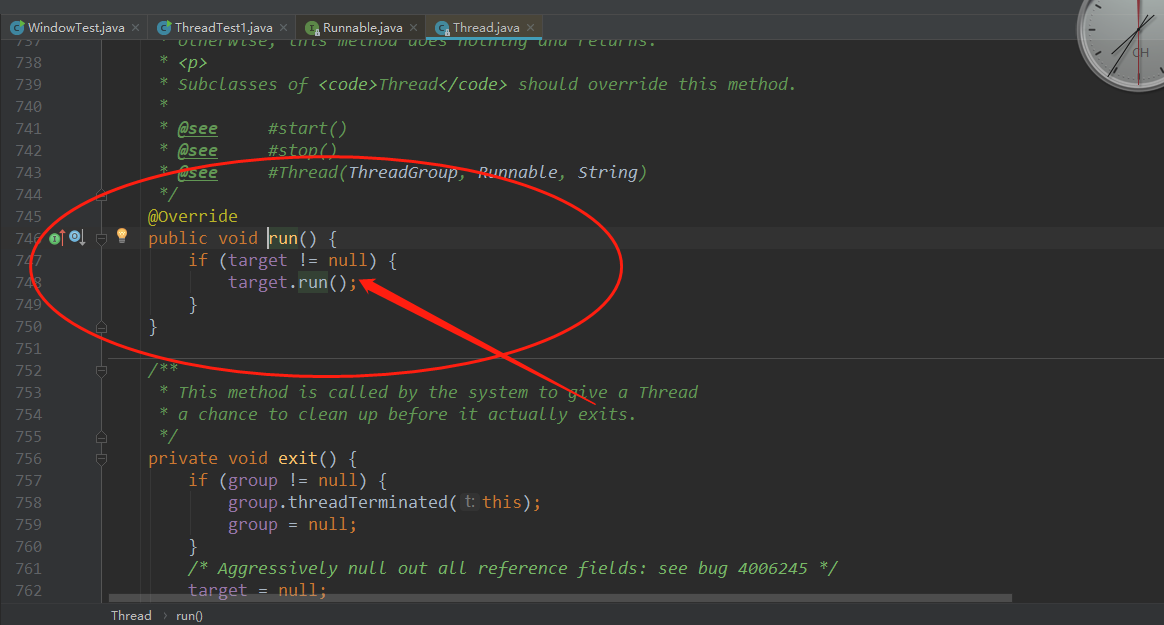
/**
* 创建多线程的方式二:实现Runnable接口
* 1. 创建一个实现了Runnable接口的类
* 2. 实现类去实现Runnable中的抽象方法:run()
* 3. 创建实现类的对象
* 4. 将此对象作为参数传递到Thread类的构造器中,创建Thread类的对象
* 5. 通过Thread类的对象调用start()
*
*
* 比较创建线程的两种方式。
* 开发中:优先选择:实现Runnable接口的方式
* 原因:1. 实现的方式没有类的单继承性的局限性
* 2. 实现的方式更适合来处理多个线程有共享数据的情况。
*
* 联系:public class Thread implements Runnable
* 相同点:两种方式都需要重写run(),将线程要执行的逻辑声明在run()中。
*
* @author ch
* @create 2019-02-13 下午 4:34
*/
//1. 创建一个实现了Runnable接口的类 class MThread implements Runnable{
//2. 实现类去实现Runnable中的抽象方法:run() @Override public void run() { for (int i = 0; i < 100; i++) { if(i % 2 == 0){ System.out.println(Thread.currentThread().getName() + ":" + i); } } } } public class ThreadTest1 { public static void main(String[] args) { //3. 创建实现类的对象(实现了Runnable接口是实现类) MThread mThread = new MThread(); //4. 将此对象作为参数传递到Thread类的构造器中,创建Thread类的对象 Thread t1 = new Thread(mThread); t1.setName("线程1"); //5. 通过Thread类的对象调用start():① 启动线程 ②调用当前线程的run()-->调用了Runnable类型的target的run() t1.start(); //再启动一个线程,遍历100以内的偶数 Thread t2 = new Thread(mThread); t2.setName("线程2"); t2.start(); } }

心得:实现Runnable接口来实现多线程,将实现类的对象作为形参赋给Thread构造器来newTread的对象来实现多线程。
疑问:使用实现Runnable接口的方式下,为什么调用Run方法可以运行该线程?
//3. 创建实现类的对象(实现了Runnable接口是实现类)
MThread mThread = new MThread();
//4. 将此对象作为参数传递到Thread类的构造器中,创建Thread类的对象
Thread t1 = new Thread(mThread);
源码分析:
Thread源码深入:

Thread中的Run方法:

@Override
public void run() {
if (target != null) {
target.run();
}
}
解答:
可见当传入的形参target不为空时,thread执行的Run方法实际上是target中重写的Run方法(即实现Runnable接口的那个实现类里实现的Run方法)